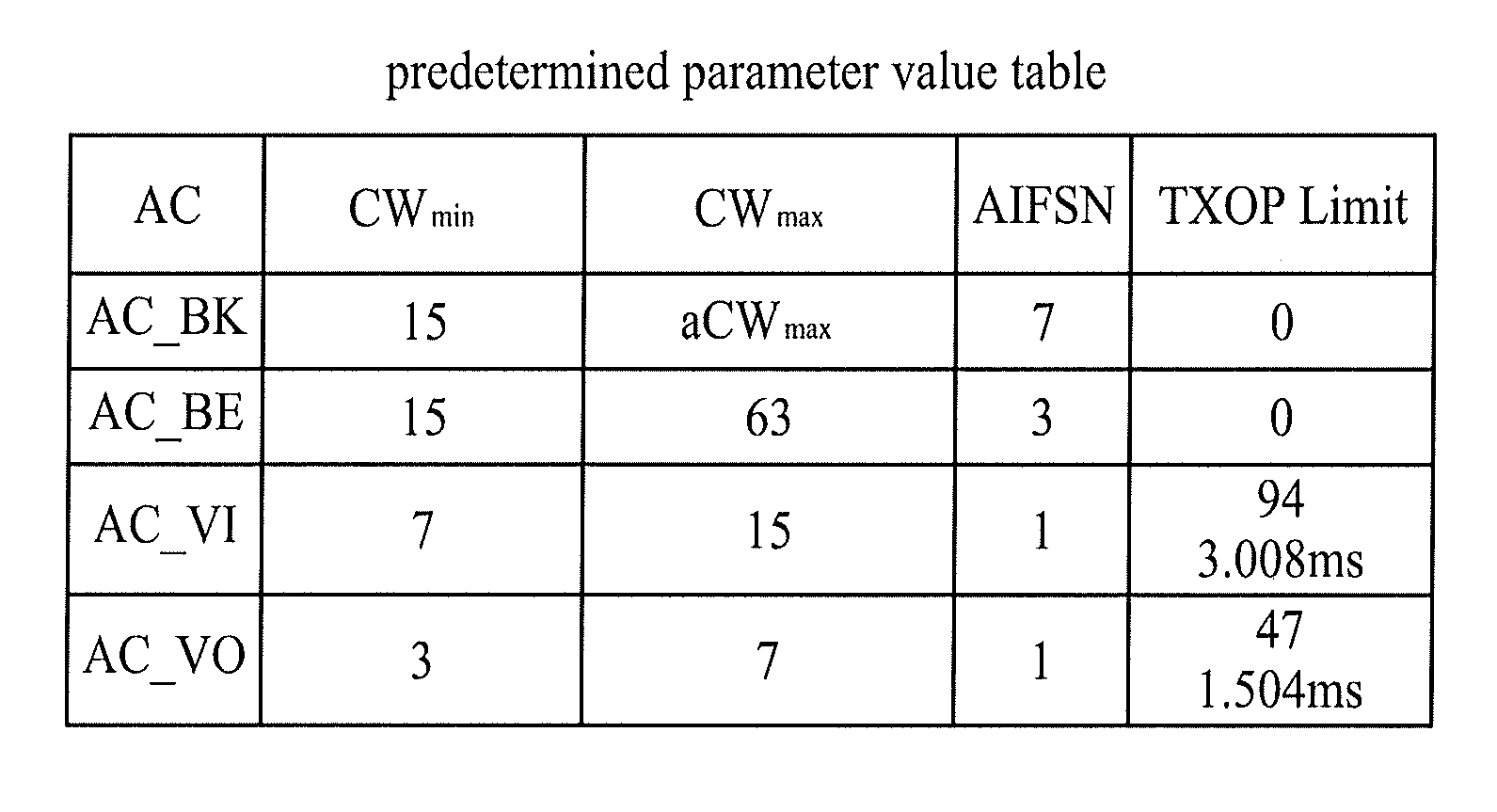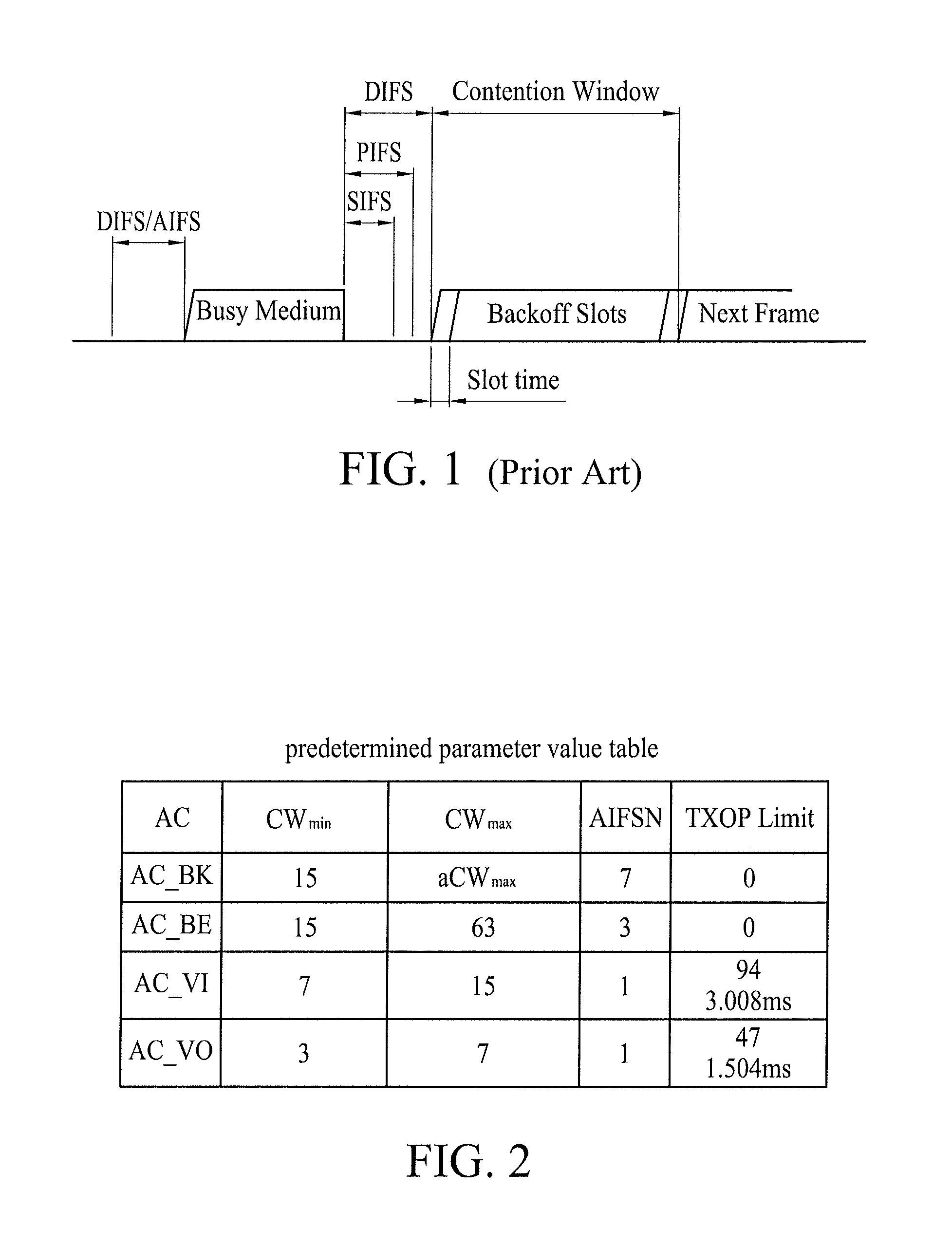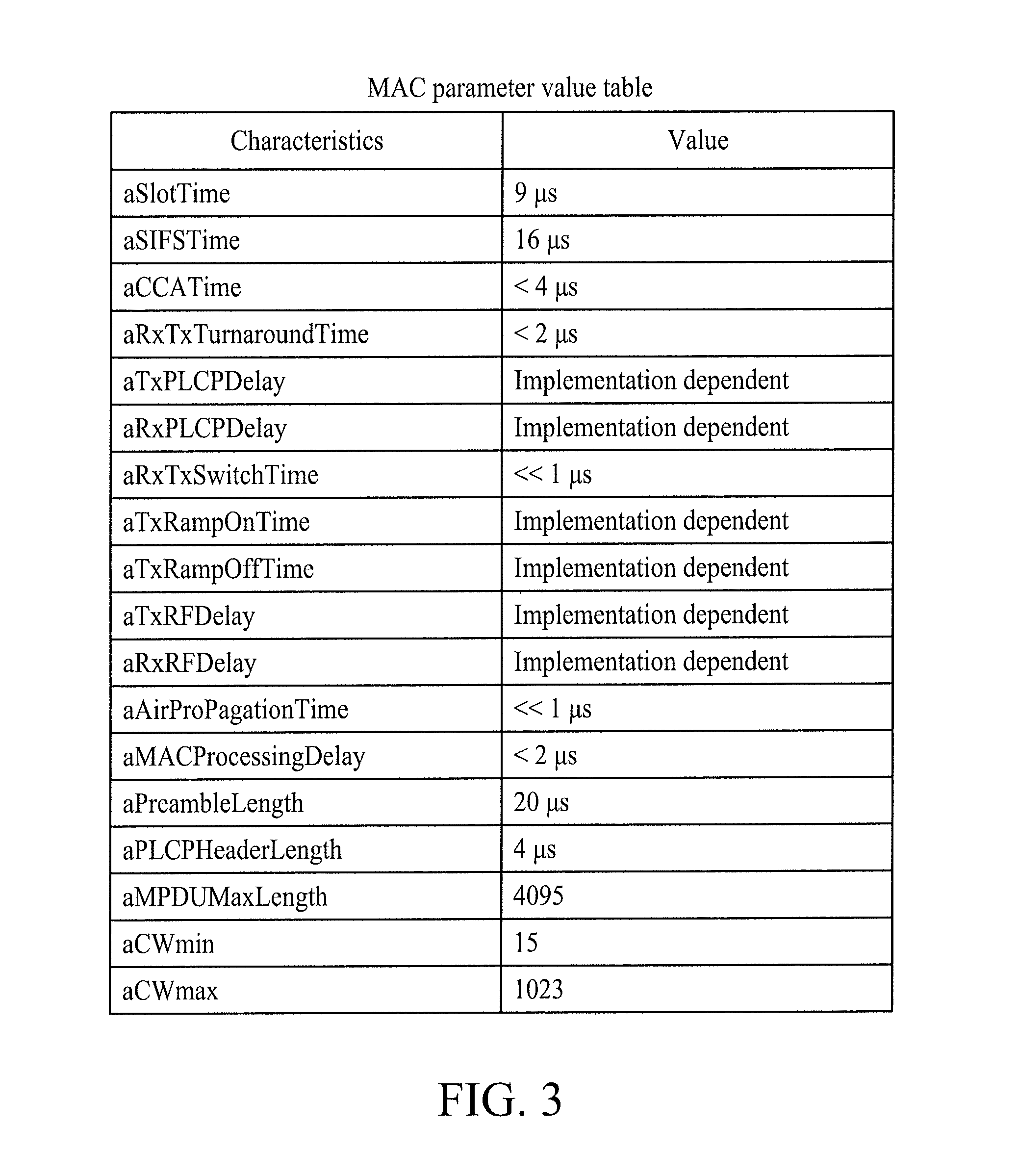Method for detecting continuous channel noise and apparatus for using the same
a continuous channel and noise detection technology, applied in the field of continuous channel noise detection and an apparatus for using the same, can solve the problem that continuous noise will disturb normal packet transmission
- Summary
- Abstract
- Description
- Claims
- Application Information
AI Technical Summary
Benefits of technology
Problems solved by technology
Method used
Image
Examples
Embodiment Construction
[0017]Because wireless bandwidth availability is restricted, Quality of Service (QoS) management is increasingly important in 802.11 networks. IEEE 802.11e proposes to define QoS mechanisms for wireless apparatuses that give support to bandwidth-sensitive applications including voice and video. The IEEE 802.11e standard defines four access categories: AC_BK (background), AC_BE (best effort), AC_VI (video), and AC_VO (voice). As shown in FIG. 2, the four access categories have various predetermined parameter values. The IEEE 802.11e standard uses these parameter values, such as a minimum contention window (CWmin), a maximum contention window (CWmax), Arbitration Inter-Frame Space (AIFS), and Transmission Opportunity Limit (TXOP Limit) to secure QoS in the WLAN.
[0018]To identify continuous noise disturbance, it is necessary to obtain a maximum value of channel busy time. If a user sets the access category to the AC_VI (video), the user has a relatively lower probability than the AC_VO...
PUM
 Login to View More
Login to View More Abstract
Description
Claims
Application Information
 Login to View More
Login to View More - R&D
- Intellectual Property
- Life Sciences
- Materials
- Tech Scout
- Unparalleled Data Quality
- Higher Quality Content
- 60% Fewer Hallucinations
Browse by: Latest US Patents, China's latest patents, Technical Efficacy Thesaurus, Application Domain, Technology Topic, Popular Technical Reports.
© 2025 PatSnap. All rights reserved.Legal|Privacy policy|Modern Slavery Act Transparency Statement|Sitemap|About US| Contact US: help@patsnap.com



